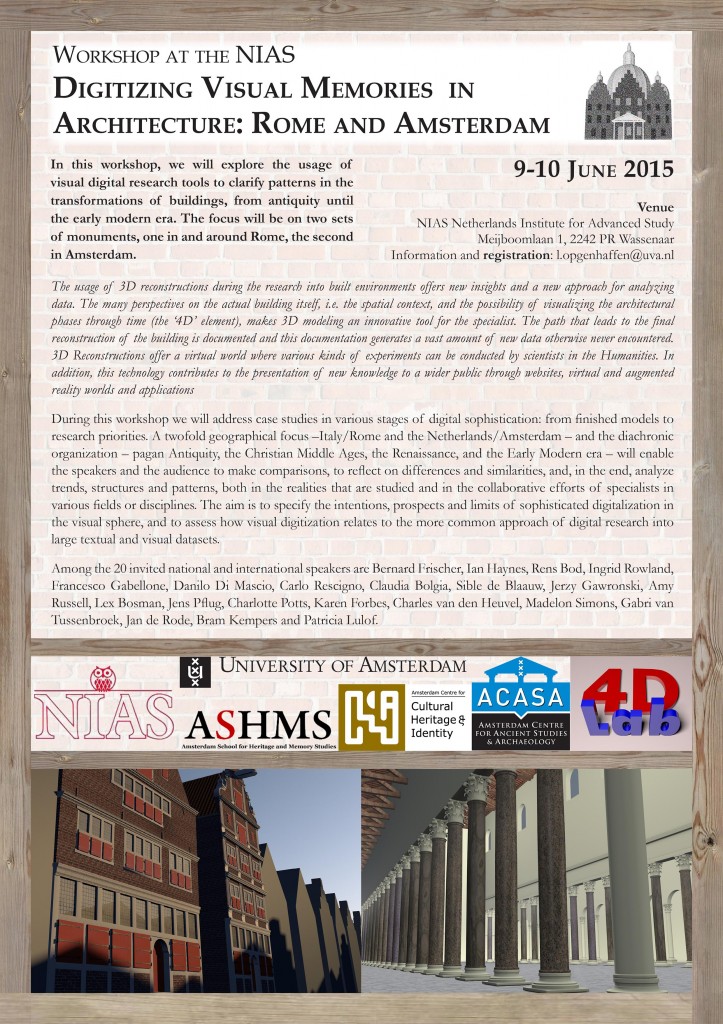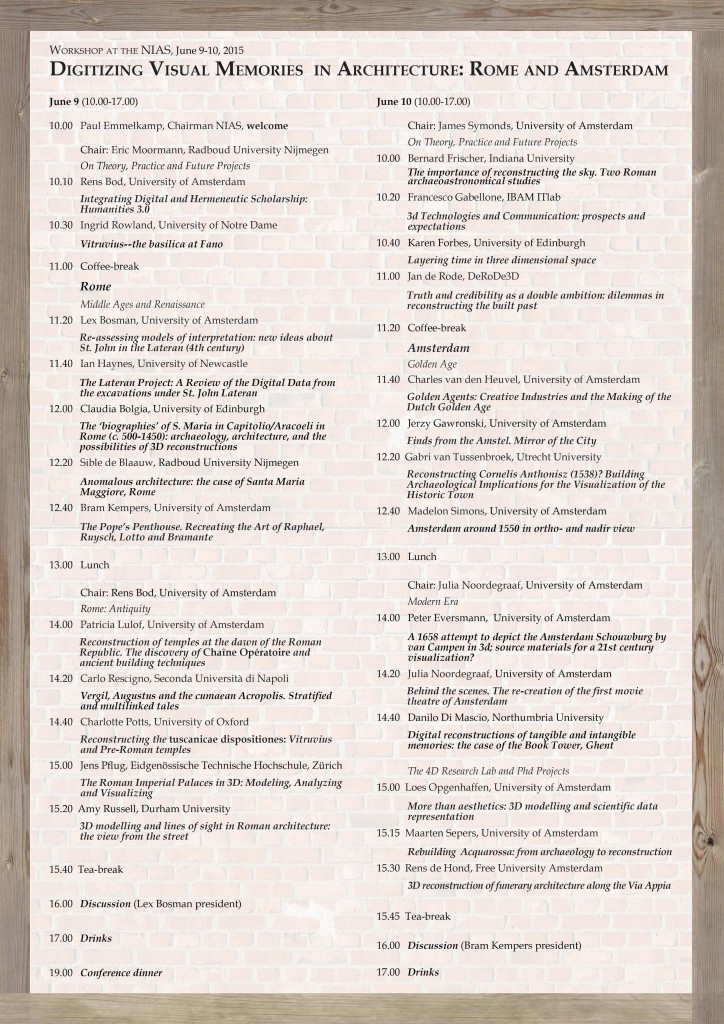Digitizing Visual Memories in Architecture: Rome and Amsterdam
The usage of 3D reconstructions during the research into built environments offers new insights and a new approach for analyzing data. The many perspectives on the actual building itself, i.e. the spatial context, and the possibility of visualizing the architectural phases through time (the ‘4D’ element), makes 3D modeling an innovative tool for the specialist. The path that leads to the final reconstruction of the building is documented and this documentation generates a vast amount of new data otherwise never encountered. 3D Reconstructions offer a virtual world where various kinds of experiments can be conducted by scientists from the Humanities. In addition, this technology contributes to the presentation of the new knowledge to a wider public through websites, virtual and augmented reality worlds and applications.
In this workshop, we will explore the usage of visual digital research tools to clarify patterns in the transformations of buildings, from antiquity until the modern era. The focus will be on two sets of monuments, one in and around Rome, the second in Amsterdam. We will address case studies in various stages of digital sophistication: from finished models to research priorities. A twofold geographical focus –Italy/Rome and the Netherlands/Amsterdam – and the diachronologic organization – pagan Antiquity, the Christian Middle Ages, the Renaissance, and the Early Modern era – will enable the speakers and the audience to make comparisons, to reflect on differences and similarities, and, in the end, analyze trends, structures and patterns, both in the realities that are studied and in the collaborative efforts of specialists in various fields or disciplines. The aim is to specify the intentions, prospects and limits of sophisticated digitalization in the visual sphere, and to assess how visual digitizing relates to the more common approach of digital research into large textual and visual datasets.FlyerNiasDEF 

